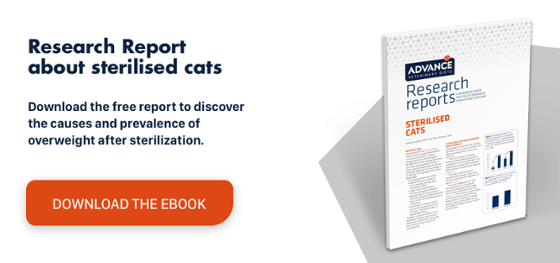Cystitis in cats: how should it be approached?
Introduction
Feline lower urinary tract disease is very common in cats, accounting for 1.5–4.6% of all visits to general veterinary practices.2
When brought for consultation, these cats have a nonspecific clinical picture involving a combination of stranguria, dysuria, haematuria, polyuria or periuria, with or without urethral obstruction.
Cystitis in cats: causes
Among other causes, cystitis has been associated with urinary tract infections, uroliths, neoplasms and urethral obstruction.
On the other hand, no underlying cause can be found in a very high percentage of cases even after a thorough diagnostic investigation. In such cases the patient is diagnosed as having feline idiopathic cystitis (FIC).1 While other types of cystitis have been described in cats, such as pseudomembranous2 or emphysematous cystitis4, FIC is the most prevalent.1,2
There has been a lot of discussion about the pathogenesis of FIC and it is currently considered a syndrome where localised abnormalities in the urinary bladder coexist with neuroendocrine disorders, rather than just a simple clinical entity. In fact, some authors define FIC as an anxiety-related disease brought on by constant activation of the cat’s central response system due to a perceived threat.1,5
Cystitis in cats: diagnostic assessment
Despite its high prevalence, the presence of FIC is diagnosed by exclusion. Accordingly, the diagnostic assessment of any cat with the clinical signs of a FLUTD should begin with a complete physical examination, a urinalysis and, if possible, an X-ray of the complete urinary tract.
Whenever this is not always possible, either because the patient’s bladder is empty when the consultation takes place, so a sample cannot be collected, or because the owner declines some of the suggested tests, the vet will have to monitor the patient’s response to treatment in order to confirm the clinical suspicion.
In any event, and even if no diagnostic tests are conducted at the initial visit, the clinician must always confirm the absence of urethral obstruction before starting any empirical treatment. Additional diagnostic tests, such as a urine culture, contrast cystourethrography, ultrasound or cystoscopy, are reserved for recurrent cases if the initial treatment fails.5
Cystitis in cats: treatment
Unfortunately, there is no such thing as a standard treatment for feline cystitis. There are many reports of cases that resolve with or without treatment within 2–7 days, even though no underlying urinary tract disease was identified;5 however, up to 65% of these patients relapse at least once within 2 years of diagnosis.1 Furthermore, over 70 different therapeutic agents or procedures have been recommended for the management of FIC in the last 40 years, although the efficacy of most of them has not been studied in controlled clinical trials.6
Although many owners link the urinary signs to a bacterial infection, the large majority of cats (especially those under 10 years) with signs of FLUTD do not have an infection. Consequently, the routine and indiscriminate administration of antibiotics without supporting evidence (a sediment test or urine culture) is not recommended.5
Considering the aetiopathogenesis of FIC, the management of these patients should aim to reduce/eliminate potentially stressful situations for the animal by implementing a multimodal environmental modification (MEMO), besides controlling any pain as indicated.5 Although clinicians often resort to administering nonsteroidal anti-inflammatories, there is no evidence to demonstrate that they are effective in the treatment of FIC.5,7,8
Unlike for cats with urolithiasis, the effects of dietary changes in patients with FIC have not been studied in detail, and while some authors believe that specific diets can reduce the recurrence rate6,9, others believe that diet only has a modest impact on the progression of FIC and the available evidence is not very robust.5
Various psychoactive drugs have been recommended for use in cats with FIC, but there are no studies comparing their efficacy with MEMO. The current recommendation is to use them if environmental modification does not work.5 Drugs suitable for this purpose include:
- Tricyclic antidepressants, such as amitriptyline (2.5–7.5 mg/cat/24 h) or clomipramine (0.25–0.5 mg/kg/24 h); and
- Serotonin reuptake inhibitors (fluoxetine 0.5–1 mg/kg/24 h).
Bear in mind that it may be several weeks before the effects of the treatment become apparent. If treatment with a psychoactive drug does not work, it should be phased out over 1–2 weeks. The side effects associated with tricyclic antidepressants include sedation, lethargy, weight gain and urinary retention, while fluoxetine may cause behavioural changes and sleep disturbances.5
The use of facial pheromones and glycosaminoglycans was recommended a few years ago, but their efficacy has subsequently been questioned.1,5
Conclusions
FIC is diagnosed by exclusion. So following an appropriate diagnostic protocol is of the utmost importance. Considering the evidence currently available, multimodal environmental modification should form the basis for initial therapeutic measures in these cats with FIC.

